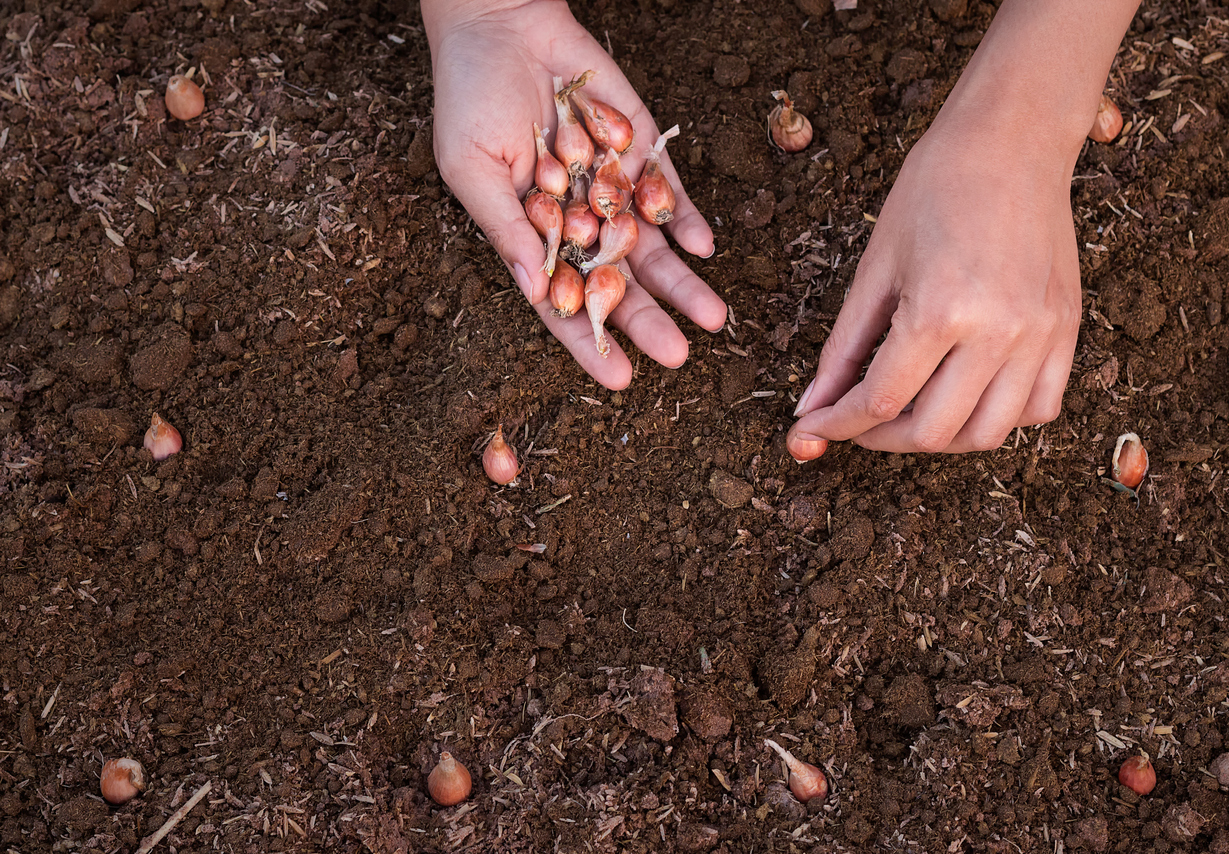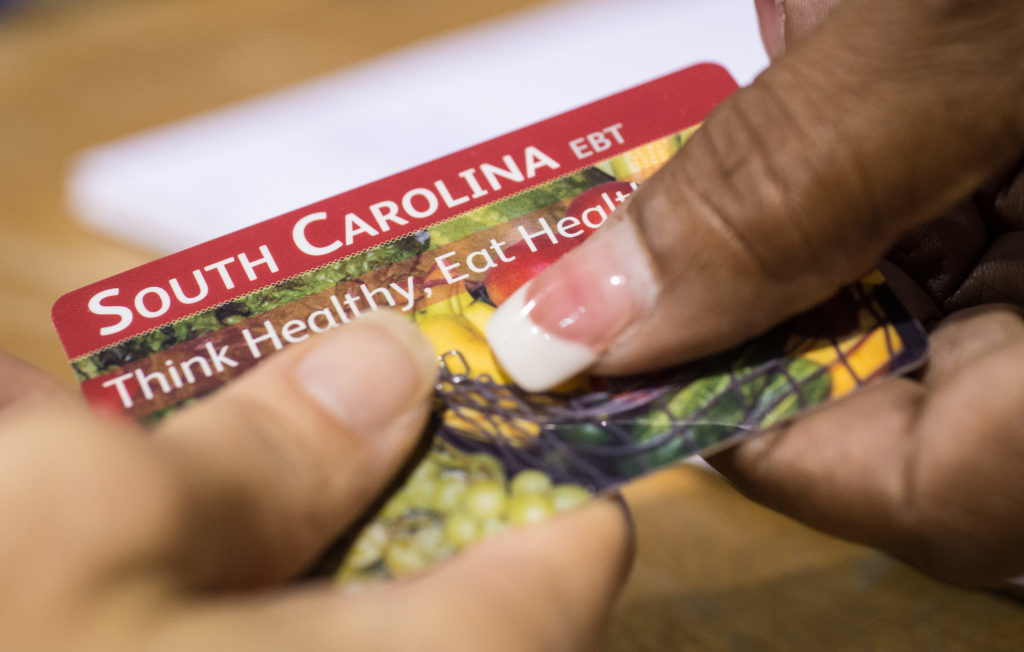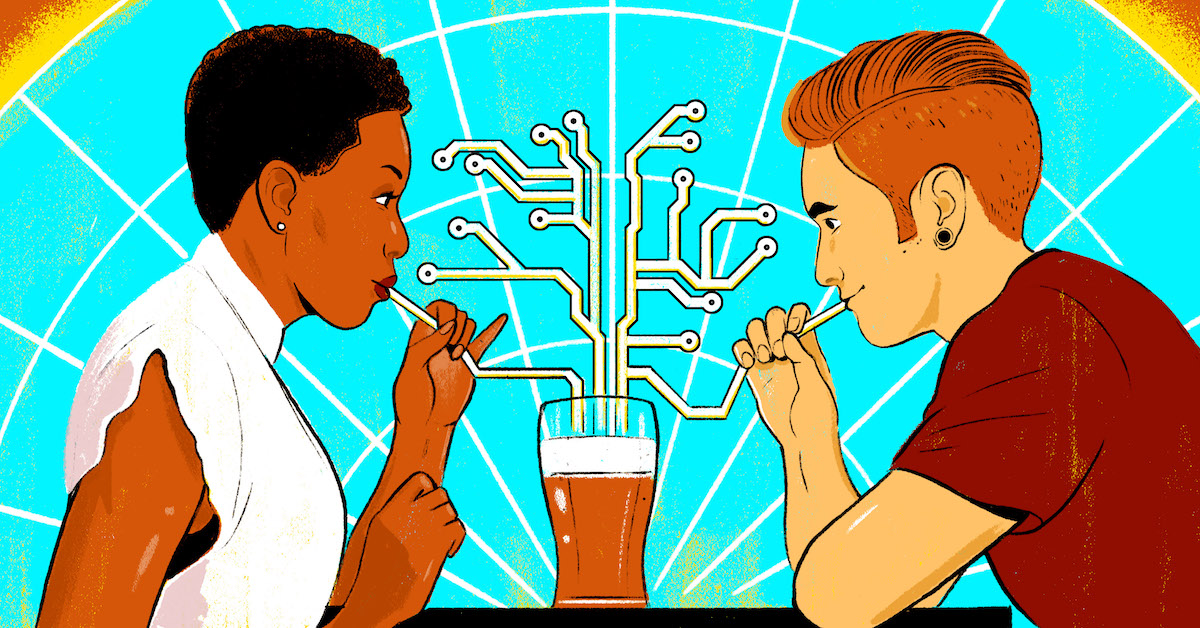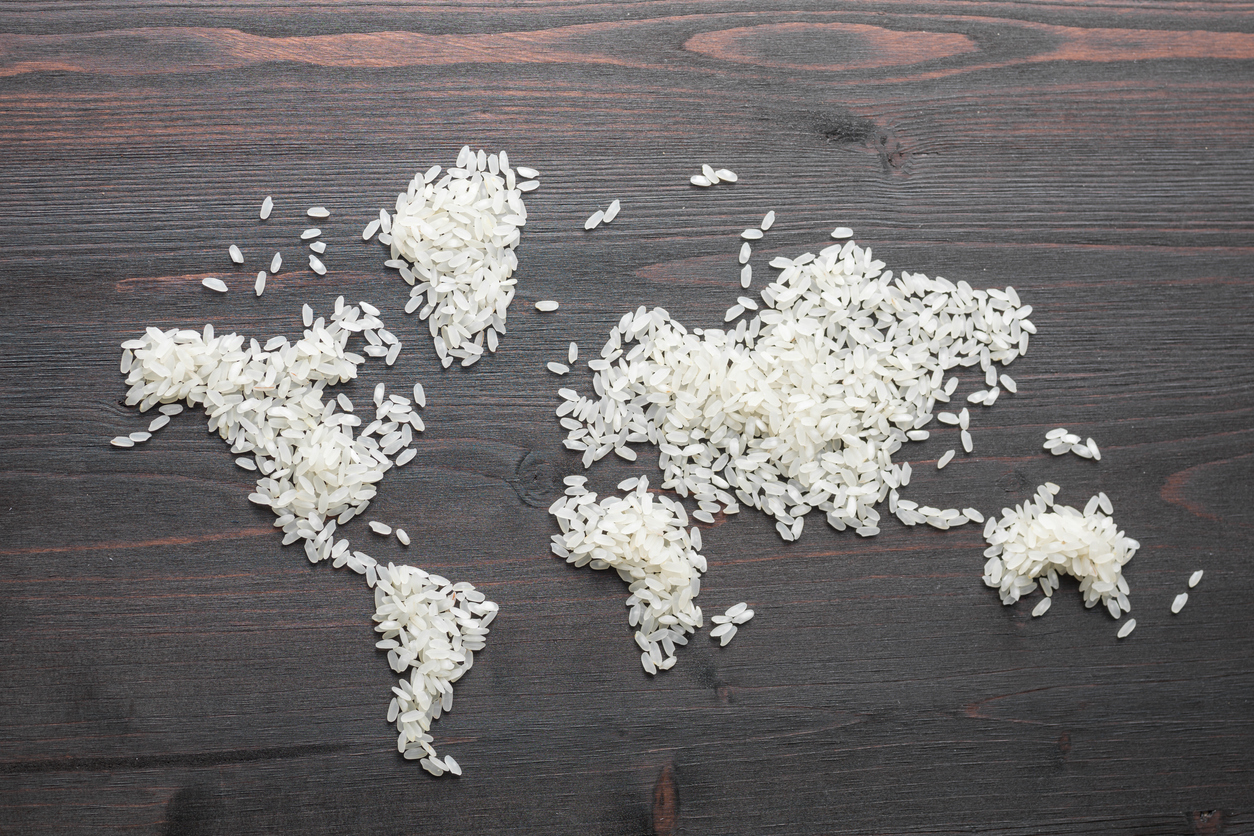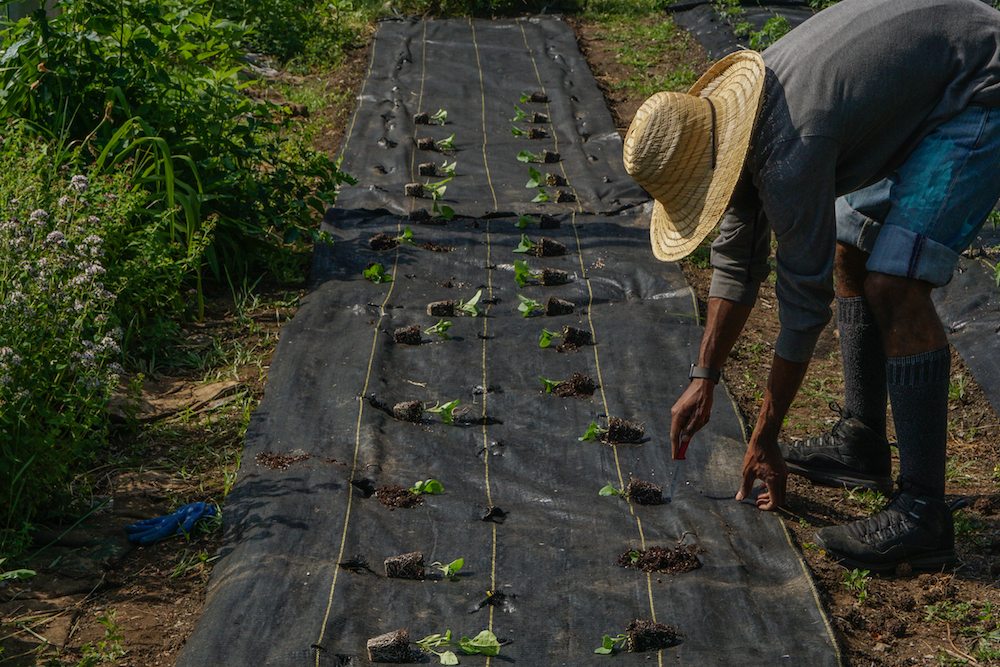
The “food movement” is a broad term for a political, social, and economic revolution. But it has no one leader, no single belief system, no agreed-upon primary goal. Instead, it’s a diverse, far-flung community united only by the conviction that the world would be better if it had a better food system, and that the fight is worth it.
But what “better” means—and, perhaps more importantly, how to get there–depends on who you ask.
So, though we’ve used the 10th anniversary of The Omnivore’s Dilemma as an occasion to look back on the past decade in food, we needed more than Michael Pollan’s take. We asked farmers, experts, and activists for insight—the people with their hands in the dirt, literally and figuratively. We posed the same question to each person: What’s the most important or surprising thing that’s changed in the past ten years? Or, what hasn’t changed that urgently needs to?
These are some of the people we turn to, as journalists, when we want to put our ear to the ground. Their fragmented responses, taken together, form a poem of sorts, one that reflects the American alternative food system in all its ambition and frustration. Here is the food movement, in its own words.
Photography by Prashanth Kamalakanthan. Special thanks to The Youth Farm for allowing us to photograph their space.
 Prashanth Kamalakanthan
Prashanth Kamalakanthan“Today, almost 80 percent of Americans say sustainability is a priority when purchasing food. But in the last decade, the promise has fallen short. For all its successes, farm-to-table has not, in any fundamental way, reworked the economic and political forces that dictate how our food is grown and raised.
Big Food is getting bigger, not smaller. In the last five years, we’ve lost nearly 100,000 farms (mostly mid-size ones). Today, 1.1 percent of farms in the United States account for nearly 45 percent of farm revenues.
Nor has the culture of American cooking changed. Farmers’ markets are ubiquitous, organic food is widely available, and access to a world of online recipes could not be easier. But the way we eat, which is different than what we eat—has remained largely unaffected.
How do we eat? Mostly with a heavy hand. For a long time, the prototypical American meal has featured a choice cut—like a seven‐ounce steak or a boneless, skinless chicken breast or a fillet of salmon—and a small side of vegetables or grains. The architecture of this plate has shifted little throughout the years.
What’s needed is a new organizing principle where large, center-cut proteins play a supporting role and grains and vegetables take center stage. And we need a collection of dishes instead of a laundry list of ingredients, reflecting a whole system of agriculture—something all the great cuisines of the world have been doing for thousands of years. It’s time for a sustainable American cuisine.”
Dan Barber is the chef and co-owner of Blue Hill and Blue Hill at Stone Barns, and the author of The Third Plate.

“The biggest change I’ve seen in the past ten years is the renewed focus on urban agriculture. Today, there are a crop of new businesses and nonprofit organizations who are working together to build an integrated local food system that triggers economic opportunities on a community level. At a time when most of us strive to reconnect with the source of our food, the time is right to ask not just how our food is grown, but where and in what circumstances.
From community gardens to backyard bees to shared kitchens for food processing, food production is no longer only a rural occupation. There’s nothing like experiencing the enjoyment that comes from eating simple, delicious foods, locally sourced from a nearby urban farm. Because maybe a bottle of fresh pressed juice won’t change the world, but where we grow the ingredients for it just might.”
Devita Davison is Marketing and Communications Director at FoodLab Detroit.

“My personal measure of the success of today’s food movement is the stunning increase in food education in colleges and universities since 1996 when my department at New York University launched undergraduate, master’s, and doctoral programs in food studies. Then, we were constantly challenged to explain why anyone would want to study about food and why we thought food was worth studying. Today, I can hardly visit a college or university that does not have courses, programs, or departments devoted to food culture or food systems and an organic garden to boot. Did Omnivore’s Dilemma have anything to do with the hordes of students eager to study about food? Absolutely. These students are the future of food system transformation and reason for optimism that it will change, and much for the better.”
Marion Nestle is the author of Food Politics and Professor of Nutrition, Food Studies, and Public Health at New York University.

“The convergence in the last decade between online shopping and sustainable food production created an exciting new retail interface that I call ‘electronic aggregation.’ As producers and clients use social media and virtual shopping carts, it is lowering the price of local foods and increasing their availability.
The bricks-and-mortar, cashier, bathroomed retail interface is a capital-intensive and overhead-expensive way to move food. The traditional supermarket, which has been in existence only since 1946, could very well be replaced by home delivery and lower-carbon-footprint distribution systems that use special software to make sure delivery vehicles make only right-hand turns all day. And the interface is is cyberspace.
Co-opting this technology, developed by global businesses, to instead create real-time conversations and relationships locally, is deviously subversive, and very cool for those of us creating a new tribe in our food communities. Heritage wisdom coupled with technological innovation offers synergy in this integrity food space, creating new efficiencies, new opportunities, and new convenience. Direct market farmers can now compete with big box stores, and eaters can enjoy more choice in their healthy food options. What an exciting time to be in the integrity food movement.”
Joel Salatin is a farmer, lecturer, and author of Folks, This Ain’t Normal; You Can Farm; and Salad Bar Beef.

“The Omnivore’s Dilemma helped produce a generation of ‘foodies’ deliciously obsessed with books, television, documentaries, conferences and festivals about food. More people than ever are fluent on the topics of how food is grown, prepared, consumed, wasted, and on how it impacts our health and the environment. Food has become a meme, spreading ideas and information through our social consciousness in bold, new ways. (While we eagerly consume these viral bits of food facts, we tend not to chew on them for very long…)
In an era of unprecedented economic inequality, dim millennial futures, and deep political disillusionment, food has also become a surrogate for hope—and personal freedom. This is understandable, but at meal’s end, our food isn’t allocated by choice, desire, values, or even by need, but through market demand. Capitalism is the silent ingredient in our food. It means that the 50 million people living in poverty in the richest country on earth—many of whom grow, harvest, process and serve our food—can’t afford to be foodies; they’re too busy worrying about where their next meal is coming from. If we care about people as much as we do about food, and if we really want to change the food system, we’d better become fluent in capitalism.”
Eric Holt-Giménez is Executive Director of the Institute for Food and Development Policy/Food First. His next book is titled What Every Foodie Needs to Know about Capitalism.

“Michael Pollan investigated and informed us about the industrialization of food, but too little has been said about the securitization of the entire system, the pervasive financialization of food. Wall Street has come to perceive that while currencies and debt markets may not be as lucrative as they once were, arable land and fresh water will possess value going forward. It would be nice to think that buying local and organic will solve the problem, but the global food crisis can be solved only if we get the bankers out of the system and begin to regulate the $648 trillion global-derivatives business that has made food into a speculative buy.
The problem can be solved only if we can achieve greater transparency in global food reserves, more-equitable international-trade agreements, and reform of plant patent laws that allow the transnational seed giants their monopolistic practices. We need to leave behind our brainless romance with the virtual, the indexical, and the derivative, and understand that the benefit of food is not cash.”
Frederick Kaufman is a journalist and author of Bet the Farm: How Food Stopped Being Food.

“In 2006, over 35 million Americans were food insecure. In 2014, the latest year for which we have data, over 48 million Americans were food insecure. Ten years ago, I thought we might be making greater strides in understanding—and then doing something about—the fact that millions of Americans were struggling against poverty and food insecurity. Today, we’ve further to go than ever. The good news: I think the food movement is readier to hear about class and inequality today than it was in 2006.”
Raj Patel is an activist and an author of Stuffed and Starved.

“The green chile hummus is cold, turgid and plain in its unrecyclable plastic package. Because hummus has come to stand for wholesomeness, anything goes—and so we mess with what was once a simple, beautiful, wholesome food. Among the supermarket’s multiple options there’s of course, the “original formula”, but there’s also white bean and basil hummus (which isn’t really hummus), beet hummus, red pepper, hummus with pine nuts and Parmesan, and hummus with, of all things, sriracha. What a mash-up!
Read the label and you’re all over the place in terms of organic or not, preservatives or not, canola or olive oil. We really know nothing about this food, where the ingredients came from, who grew the chickpeas, who thought up the flavors, where they were assembled, if the oil was rancid. Not to mention who did the heavy lifting and how they were treated.
Reread—or read for the first time—The Omnivore’s Dilemma and you’ll see how vital and relevant this graciously written book is for us today still, and why hummus might be worth fretting over—or maybe not—and why it matters that we enjoy what we eat.”
Deborah Madison is the author of Vegetable Literacy and Local Flavors.

“The greatest change this farmer has seen over the past 10 years is the enthusiastic embracing of microbes. I call it the Biotic Revolution. We are waking up to life.
Whereas the tens of thousands of microbial species associated with plant roots were once feared as a potential source of plant disease, agricultural science is coming to understand that wise nurturing of those rhizosphere species with composts and green manures is the key to plant health and vigor. And the 100 trillion bacteria and other microbes, known collectively as our human microbiome, are easily managed to our benefit by choosing wisely the foods we eat, is now the emerging frontier in human health and vigor. Hooray for the new biophilia.”
Eliot Coleman is a farmer at Four Season Farm and author of The New Organic Grower.

“One of the most remarkable developments since The Omnivore’s Dilemma is the wave of entrepreneurs who are reinventing convenience food to be affordable and tasty, but also good for us and the planet, for those times when we just can’t linger over a homemade meal. Salads sold in vending machines, ketchup made with vegetables, salami from animals treated well. And in this there is a big surprise: They’re getting help in scaling up from veterans of the processed food industry, who are using some of the marketing tricks they used to sell junk to now sell, as Michael Pollan would put it, real food.”
Michael Moss is a journalist and author of Salt Sugar Fat: How the Food Giants Hooked Us.

“In the past ten years we’ve seen an explosion of interest in the food movement and local food. As the movement has become more hip, however, we’ve seen the development of corporate greenwashing. Farm and food workers continue to be exploited, and people in communities doing the day-to-day work continue to not be recognized.
Simultaneously, we’ve seen an emergence of people who understand that you can’t have a food movement unless it’s a just food movement. It’s not about fixing a broken food system; it’s about creating new labor and models. People all over the world are acknowledging racial inequalities and making racial justice and equity integral; building food and farm businesses where the owners and workers are paid fairly; ensuring low income people can afford to eat good healthy, sustainably grown food; valuing farms based on positive environmental impact, and recognizing that seed keeping is directly linked to the control we have over our food.
Our vision for the next ten years and beyond is to continue doing this just work, and to support and celebrate the people doing it with us.”
Rise and Root Farm is a cooperatively run farm in Orange County, New York, owned and operated by Karen Washington, Jane Hodge, Lorrie Clevenger, and Michaela Hayes, and committed to engaging rural and urban communities through food and farming.

“From 1993 until 2012 I chiefly served as the head of marketing for Fresh Fields, Whole Foods Market, Balducci’s and Sprouts Farmers Market. Yet for a long time, no one other than Seth Goldman (who went on to found Honest Tea) ever asked for my help in networking or breaking into natural foods, because the interest wasn’t there. But starting around 2006-7, I was pleasantly overwhelmed with business school graduates who were turning their backs on Wall Street and approaching me about how to get involved in the intricacies of the world of responsible food.
A lot of us in ‘The Industry’ avoided reading OD as long as possible, because although it had gained public influence, we thought we already knew our business, so what good could come of it? When we did read it, we saw patterns that had not been there before, such as the fact that corn is grown no longer by sunlight but fossil fuels (which leads to surpluses, and to its overwhelming use as a feed source).The book made food sound both seductive and disgusting. It was the other side of the mythologizing of food. After each chapter, you put down the book both intrigued and repulsed.”
Joe Dobrow is the author of Natural Prophets.

“What surprises me about the food movement today is that I never could have imagined how the seemingly all-powerful industrial agriculture would be so helplessly defenseless when exposed by the truth. Thanks to writers like Michael Pollan, who have formed collaborative relationships with livestock producers like myself to transform our hopes and struggles into vivid stories, consumers are increasingly aware of how food is produced, where it comes from and why they should care. A critical mass of concerned eaters are now demanding food produced in a healthier, safer, more dependable and humane manner. The challenge going forward will be to continue to help consumers sort fact from fiction, even as Big Food keeps spinning out advertising copy to promote its industrially produced products.”
Mike Callicrate is a rancher and founder of Ranch Foods Direct, St. Francis, Kansas, and Colorado Springs, Colorado.

“When I was working on the 1990 farm bill, I escaped to New York City for a few days for my college roommate’s surprise 30th birthday. Everyone there was super cool and wearing black, and one girl was crying because Matthew Broderick had just dumped her for Sarah Jessica Parker. I fell asleep in the corner of the room because no one really wanted to talk to me about food and ag policy. Fast forward ten years, and public engagement has completely changed. If I go to a party now and say, “I’m involved in food and agriculture,” people want to talk to me. That’s really important—and to achieve policy change we’re going to have to engage new constituents and broader the conversation even further.
I’m disheartened, however, by the low literacy that exists in this country around food and agriculture. A lot of rhetoric isn’t grounded in the realities of farming and ranching. We need people to be engaged and interested, but also willing to dig deeper and learn more about complex issues. The Omnivore’s Dilemma, as great as it is, is just one book. In this regard, I’m optimistic about the role farm-to-school programs will play—research shows that children who are engaged in garden-based learning not only do better on science tests, they eat more fruits and vegetables.”
Kathleen Merrigan is the Executive Director of Sustainability at George Washington University. She is a former U.S. Deputy Secretary and Chief Operating Officer of the U.S. Department of Agriculture.

“Since The Omnivore’s Dilemma, there have been a growing number of people addressing the issues raised by the post-industrial economy, as described, for example, in John Thackara’s recent book, How to Thrive in the Next Economy. It is one where people define the boundaries of the place they belong to along ecological rather than political or economic lines, and thereafter set their goals not towards unlimited economic growth but towards the regeneration of life on earth. They then work toward using their own resources to have a thriving economy and still maintain those resources. The term Thackara uses is ‘bioregionalism.’
This approach is focused not on food and agriculture only, but those are essential: Farmers are NOT on their own, but working with others to achieve a thriving economy. This as opposed to, say, devoting yourself to developing new technologies aimed at keeping the current system functioning in the midst of depleting resources, rising energy costs, and climate change.”
Fred Kirschenmann is the President of the Board at Stone Barns Center.

“The Omnivore’s Dilemma was a hugely influential book, launching a generation (or two or three) of eaters who really think about their food and another generation of journalists following in Michael Pollan’s footsteps, examining every nook and cranny of the food system. We have also seen an entire wave of restaurants, start-ups and food companies selling the food this movement champions.
But one thing that has not happened? The meaningful coalescence of a broad-based political movement based on reforming the food system, one that is powerful enough to prompt changes in the very policies that Pollan did so much to expose. Journalism can go only so far. Entrepreneurs and their customers can do only so much. More substantive change has to come through a political movement akin to the Farm Bureau, or the NRA with its millions of members on email lists and speed dial. And frankly, that has yet to happen. Without it, change will be piecemeal, hard fought, and slow to arrive.”
Samuel Fromartz is the editor-in-chief of Food & Environment Reporting Network.

“The food system is broken. On one hand, there’s the lack of consciousness on the part of the consumer about the reality that millions of human beings, men and women, work from sunup to sundown to produce the food on their plates. On the other, there’s the power of large corporations, consolidated into a few supermarket or fast food companies. These corporations have set new standards for the food industry, requiring that food is produced with high standards for quality but never that food abides by high standards for respecting workers’ rights.
As consumers, we’ve focused on select rights when we buy our food – we seek food that is produced under good environmental standards, or in whose production animal rights are respected. But very seldom do we pay attention to the human rights of the human beings who made possible that food’s production. If this were a race track, environmental rights would be in their second lap, animal rights would perhaps be finishing their first lap, and human rights would barely be tying their shoes to begin the race.
That’s why, as the CIW, we continue our struggle for Fair Food so that consumers become conscious about exploitation in the food system, and so that corporations take responsibility to demand higher human rights standards in their supply chain.”
Lucas Benitez represents the Coalition for Immokalee Workers.

“Fish customers now are more educated about where their fish comes from than ever before. About 80 percent of the seafood Americans consume is imported, while most of our very best fish and shellfish, like wild salmon, tuna, shrimp, stone crab, and squid, are sold overseas. Customers are aware of the horror stories of how most farm-raised fish is produced: by slave labor, raised in filthy conditions, filled with antibiotics and hormones. People want wild fish, and they want local fish.
As a fishmonger I consider myself a representative of the remaining local commercial fishing community — all the small, family-run boats that fish in Eastern Long Island and are barely surviving. I can answer any question about how the fish are caught, what they eat, what the seasons are, what the regulations are, and how to cook the local fish the customers are not familiar with, like tautog, dogfish, sea robin, and bluefish.
Customers respect that level of knowledge and are grateful for the opportunity to learn about what is local, sustainable, and delicious!”
Stephanie Villani and her fisherman husband Alex sell at GrowNYC Greenmarkets in Manhattan and Brooklyn.

“To change isn’t simple. Change is comprehensive. Our family changed how we buy food—committing to a handful of trusted purveyors and limited the big box role to fill-in. We’ve gained transparency. We’ve improved the quality. We support our regional food production community. While changing what we buy, we also changed our broader food habits—making, not buying prepared meals at school and work; trading out restaurant nights for more at home nights; and loving leftovers while reducing food waste. The family engagement around meals is interesting, involved, thoughtful and entertaining.
Our family and household changes are similar, on a small scale, to the changes being driven by larger institutions. Institutions committed to real food change both their procurement and their entire food preparation system with innovative menu engineering, attention to food waste, and on-demand food preparation to maintain budget neutrality. The great benefit: a revitalized food culture and community.”
Dan Pullman is managing partner at Fresh Source Capital.

“Over the last 10 years, Americans have become so much more aware of the impact of their food choices on their personal health and on global sustainability. They are hungry for the government to provide clear, actionable dietary recommendations. Unfortunately, the government’s dietary guidelines still fail to provide the unbiased recommendations to cut down on animal meat, salt, sugar and fat, even when their own scientific advisory panel insists on it.”
David Benzaquen is the Founder and CEO of Plant-Based Solutions.


